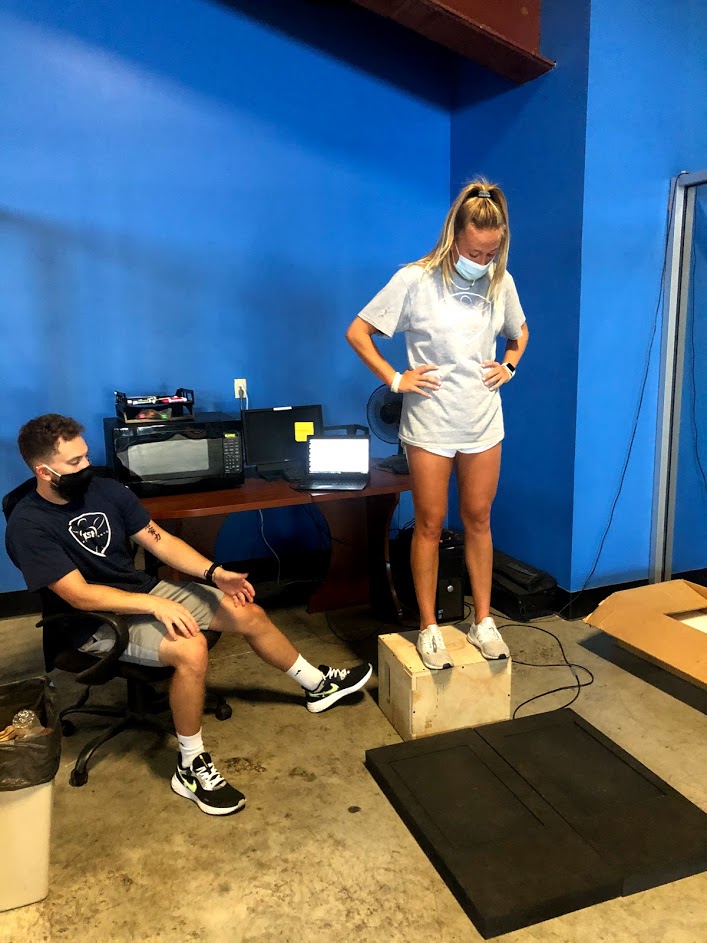The Force Plates – Using Science Instead of Speculation
Force plates are used to measure the forces that an athlete applies to the ground when they move. This includes jumping, landing, stepping, hopping, etc. Tracking data on the force plates can help us benefit you in a number of ways including following:
- Assessing injury risk
- Tracking and analyzing athletic performance
- Determining athlete’s strength and weaknesses
- Modifying programing to maximize athleticism
We use dual force plates, meaning there are two separate platforms so we can get an accurate measure for both right and left sides. This helps us determine if an athlete favors one side of their body over the other which could lead to a future injury.
Force plates are the “gold standard” for tracking and analyzing athleticism and injury resiliency. Therefore, we thoroughly use them as part of the initial assessment with new athletes and reassess monthly. Additionally, we will do a shorter assessment once per week to get a running collection of data on the athlete.
We work to educate both athlete and parents about what the force plates are and how we use them to assess the athlete. We send a progress report home once per month so that both parent and athlete can visually see how the program is benefiting them.
Force Plate Testing
We offer force plate testing and comprehensive analyses to teams and individuals of all sports and levels of athleticism. Please contact us for rates and information.
Take your training to the next level with real science and Kinetic Sports Performance.


This graph is looking at asymmetries between eccentric and concentric forces in the right and left legs. Eccentric force is deceleration or braking force of a vertical jump and is the initial dip. Concentric force is force production into the ground on the way up of a vertical jump. A high percent difference between right and left leg in either of these categories can be a potential area for injury risk.

